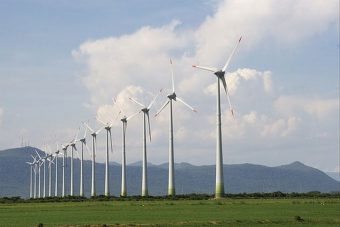
India’s wind energy capacity addition during April and June 2017 fell to historic levels as the sector added less than 7% of the capacity added during the preceding quarter.
Compared to the 3,579 megawatts wind energy capacity added by India in Q1 2017, only 228 megawatts was added in Q2 2017, data released by the Central Electricity Authority show. India’s wind energy sector has witnessed 285 megawatts capacity addition during Q2 2016. This marked the least quarterly capacity addition seen at least since Q3 2015.
Wind energy, which remains the largest contributed to India’s renewable energy sector, with a share of 57% in the sub-sector’s installed capacity, had a share of 22% in Q2 2017 capacity addition. Solar power capacity beat wind power in terms of quarterly capacity addition for the first time since Q2 2016, when wind had a share of 20.5% while solar dominated with a share of 75%.
The sudden collapse in wind energy capacity addition can be attributed to several reasons, including expiry of tax & financial incentives and refusal of power utilities to sign power purchase agreements.
End of March 2017 also marked the end of the generation-based incentives and accelerated depreciation, the two major drivers of wind energy capacity addition in India. Generation-based incentive provided wind energy developers with a revenue of Rs 500/MWh ($7.8/MWh) in addition to the feed-in tariff offered by the state where the project was located. This translated into an additional revenue to around 10% or so.
Accelerated depreciation attracted several non-renewable energy companies to the wind energy market. This provision allowed companies to invest in wind energy projects to reap tax incentives. The government would assume a higher rate of depreciation in wind energy assets which translated into lower tax liability on the capital invested on setting up these projects.
Earlier this year, India introduced competitive auctions in the wind energy sector, which resulted in record-low tariffs of Rs 3.46/kWh (¢5.4/kWh), significantly lower than any feed-in tariff being offered in the country. This development led several state utilities to back out from signing fresh power purchase agreements with wind energy projects that were on the verge of completion under the feed-in tariff regime.
With the central as well as state governments now looking to completely shift to the tendering process, wind energy capacity addition in India would now almost completely be tied to the auctions timeline. It, thus, seems hard to imagine that India would see the record capacity addition of 2016–2017 any time soon.
Source: cleantechnica.com

